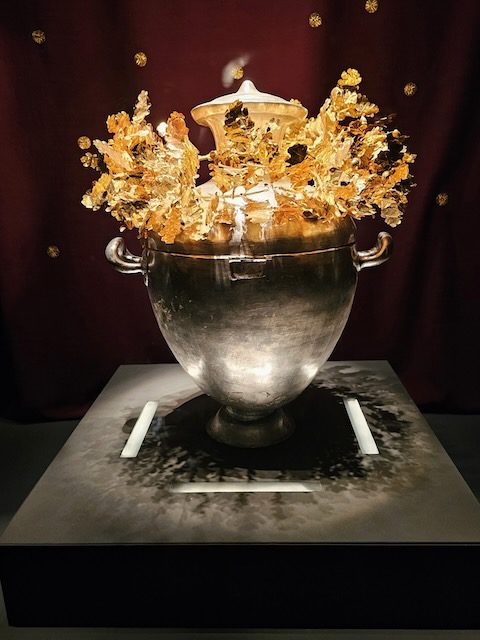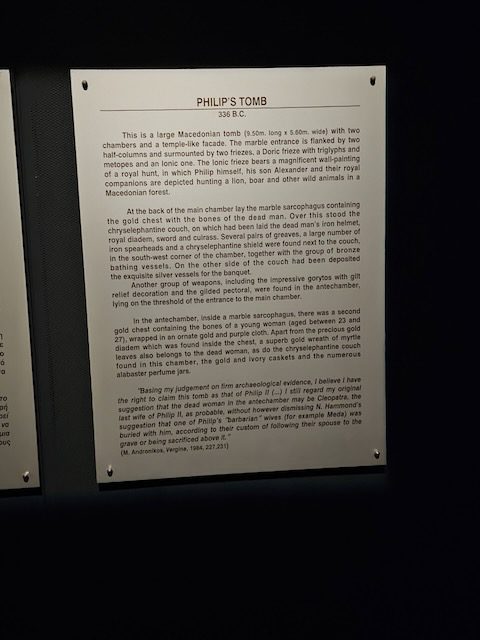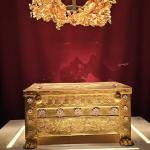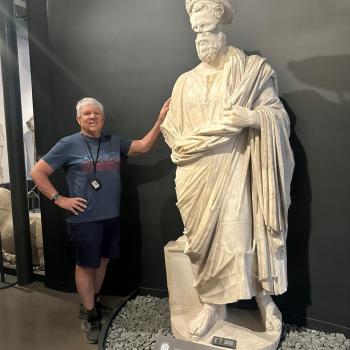There are not many important sites in Greece I have missed over the years, but somehow, someway I missed the town of Veria near Berea because it was not a Biblical site on my tour list. Not this year. This year we went to Veria after a brief stop in Berea towards the end of May and I was left with my jaw hanging open. Somehow, this tomb had escaped grave robbing, and I am not exaggerating in saying that what was found in those four tombs in that one complex are about as impressive and as important as what was found in King Tut’s tomb, as you will soon see. Philip of Macedon was a fierce warrior and the father of world-conquering Alexander the Great. He was also the grandfather of Alexander’s only child Alexander IV, who is also buried at this site. If you think I’m exaggerating about what is in those tombs, take a look at this—
A solid gold leaf crown on a solid silver pot. This alone is worth ten fortunes…. But let us tell the story. The year is 335 B.C. and Philip has died. He is to buried in a field on top of which would be a rounded hill– a tumulus. While Philip was a warrior, he was also one who wanted his son Alexander to be more than a warrior. He hired the great philosopher Aristotle to educate his son, to train him to be a great leader, and culture shaper, not merely a fierce warrior. And indeed he would become all of that spreading Greek culture and language all the way to India and south all the way to Egypt, places Philip never saw. He spawned the Hellenistic revolution and era, and the great empires, like the Persian one, fell beneath his feet. Greek became the lingua franca of that whole part of the world and Greek education and culture was emulated and adopted by Alexander’s successors, including the Romans. A good starter book about Alexander is Peter Green’s classic, Alexander the Great, now enhanced and augmented by Eugene Borza in a 2013 edition. But I digress. It is not too much to say that had it not been for those Macedonians, particularly Alexander, there would have been no Koine Greek or Greek New Testament. So this back story is important for those who want to understand the New Testament. Let’s start with the sign in the tomb of Philip…
Somehow this tomb avoided discovering until 1977 when the locals were going to build a proper soccer field. What they found when digging was so astounding that those plans had to be scrapped, and it took seven more years to excavate the site properly and prepare the site for a museum, and now there is to be a second museum of what ‘else’ has been found in the same vicinity. But that is a story for another day. The decision was made to use the burial site itself as the museum, and so it is under the tumulus— unique! And this keeps things cool and protected as well, protected from light, theft, and much more. So let’s explore this site in a series of blog posts. I promise you will be impressed.















